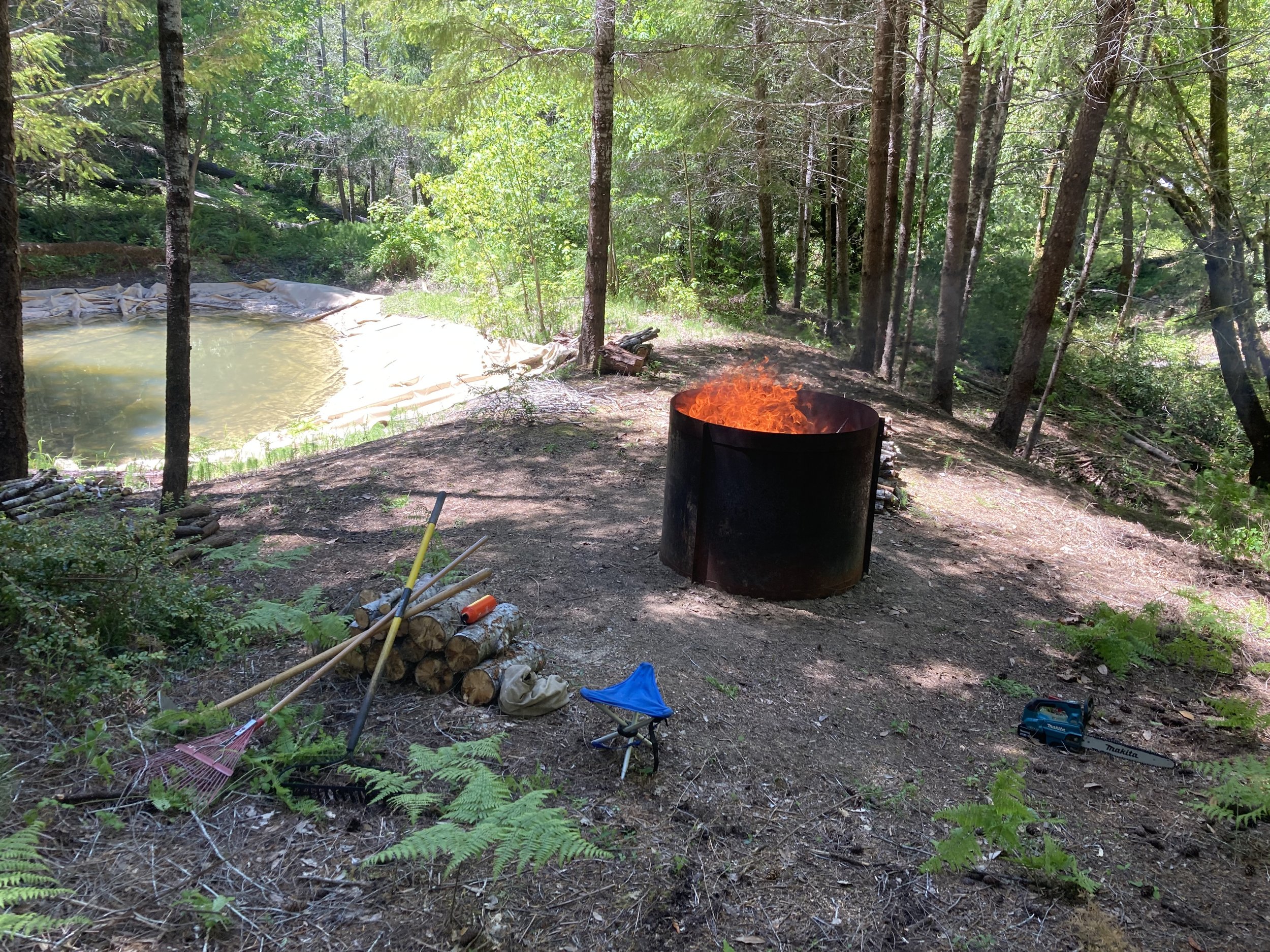There’s not enough time to fully digest the topic of biochar during a 20-minute presentation. Following a recent talk, the organizer asked me to provide a few paragraphs to share with his group.
Wrapping up a kiln burn
My experience with biochar began with the problem of excess forest waste material. West of the Mississippi, this material tends to accumulate and burn, rather than rot as it does to the east, but our culture suppresses fire. When I moved to Humboldt in 2010, I began removing the excess fuel manually and burning it. But simply burning the excess wasn't satisfactory, because in permaculture, problems are eliminated rather than solved, by making them into solutions.
The land where I live was a cannabis farm when I arrived in 2010. The soil needed regular amendment for this crop, but from an ecological perspective, supplying amendments from elsewhere was unsustainable. It dawned on me that I could make two problems into one solution by transforming forest waste into biochar and incorporating it into the soil, where it would hold and reduce the need for nutrients, accomplish the same thing for water, harbor beneficial microorganisms, and even sequester atmospheric carbon.
Biochar is charcoal. When charcoal is made at a high enough temperature, for enough time, it performs in the way just described, and it can properly be called biochar.
Other uses have been identified for biochar besides amending soil. It adds strength and insulation to concrete while lowering its weight and thus its carbon footprint. It can improve the durability and increase the service life of asphalt pavement. It can be added to plaster, bricks and concrete at up to 80%. Inside walls, it increases insulation and breathing properties and maintains 45–70% humidity levels in both summer and winter. The Ithaka Institute has identified 50 different uses for biochar, all of which divert carbon from the carbon cycle.
We are pumping carbon into the atmosphere by burning fossil fuels, gradually increasing global temperatures with the greenhouse effect. Making biochar and putting it into some kind of storage is the only proven way to reverse this. It can be made by anyone with biomass and a match.
Charcoal is made by burning biomass and extinguishing the fire when the flames go out. Biomass does not actually burn. In a fire, it separates into two fuels: gases that burn in the air as flame, and a solid residue that has to wait for air to reach it in order to burn. Flames prevent air from reaching the solid material. Heat from the flames keeps drawing the gases out of the biomass until they're gone.
An ordinary fire can be extinguished when the flames disappear to produce biochar. Pile burning is a low-cost method of making biochar that we call a “conservation burn.” But by controlling air to the fire, the production efficiency jumps from about 10% to about 20%. Controlling air is the main purpose of using a what we all a “flame cap” kiln, which forces the air to enter only at the top so that only the gases combust. In either case, the idea is to extinguish the fire when the flames stop, just as air starts to reach the solid residue. That residue is biochar.
We're out of the cannabis business, but I'm still making biochar. I plan to sell it at the farmer's market, where I'll also be talking about it with visitors to my booth. What I don't sell can be spread in the forest, where it performs the same ecosystem services that it did for cannabis. Our forest soil was damaged by logging in the 50's and 60's, and biochar will help restore it. As a top dressing, biochar will incorporate in the soil along with other litter.
Biochar should be inoculated before burying it, by steeping it in compost or compost tea. Otherwise it will draw nutrients from the soil for about a season until it reaches equilibrium. As a top dressing, char doesn't have to be inoculated; it will disintegrate due to the natural forces that occur in soil, increasing the surface area, and become fully populated with nutrients.
